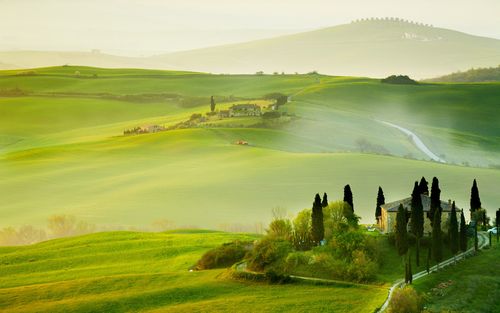The Ultimate Guide for Backpacking Yosemite Falls: From Planning to Hiking
Yosemite National Park, located in the Sierra Nevada Mountains of California, is one of the most popular destinations for outdoor enthusiasts. It boasts breathtaking vistas, granite peaks, and towering waterfalls that attract millions of visitors each year. Yosemite Falls, one of the park’s most iconic features, is a favorite among hikers, backpackers, and outdoor adventurers. If you plan to backpack Yosemite Falls, here’s what you need to know.
Plan Your Trip
Planning is a crucial part of any backpacking trip, and when it comes to Yosemite Falls, it’s even more critical. The waterfall is a strenuous hike, and you need to be in good physical condition to make it to the top. Before you start planning your trip, assess your fitness level and make sure you’re up to the challenge.
The best time to hike Yosemite Falls is during the late spring or early summer when the snowmelt causes the waterfall to reach its peak flow. Check the weather forecast before your trip, and be prepared for sudden changes in temperature. Bring appropriate clothing and gear, including a sturdy backpack, hiking boots, and plenty of water and food.
Get Your Permits
To hike Yosemite Falls, you’ll need a permit. The number of permits issued is limited, so it’s essential to reserve one in advance. You can apply for a permit online through the park’s website or at the Yosemite National Park visitor center. The permit costs $10 per person, and it’s valid for one day. If you plan to spend more than one day in the park, you’ll need a wilderness permit, which costs $5 per person per night. Again, make sure to book your permit in advance, as they can sell out quickly.
Know the Trail
The Yosemite Falls trail is a 7.2-mile round trip with an elevation gain of 2,700 feet. The trail starts at the Lower Yosemite Falls trailhead, located near Yosemite Valley Lodge. From there, it follows the Merced River to the base of the waterfall and then climbs steeply to the top. It’s a challenging hike, but the stunning views from the top make it all worthwhile.
Along the way, you’ll pass several scenic spots, including Columbia Rock, where you can take a break and enjoy the view. You’ll also pass through dense forests and rocky terrain before reaching the top of the falls.
Be Safe and Respectful
Backpacking Yosemite Falls can be an exciting and rewarding experience, but it’s essential to stay safe and respectful during your trip. Yosemite National Park is a wilderness area, and you should take precautions to protect yourself and the environment. Follow the park’s guidelines regarding food storage, waste disposal, and campfires. Keep a safe distance from wildlife and respect their habitats.
When hiking on the trail, stay on the designated paths and follow the signs. Watch your footing, especially on steep or rocky terrain, and be aware of your surroundings. Always carry a map, compass, and whistle, and don’t venture off-trail or hike alone.
Conclusion
Backpacking Yosemite Falls is an adventure of a lifetime, but it requires careful planning and preparation. Start by assessing your fitness level, booking your permits, and knowing the trail. Be safe and respectful during your trip, and enjoy the breathtaking views that Yosemite National Park has to offer. With the right mindset and preparation, you can make it to the top of Yosemite Falls and create unforgettable memories.
(Note: Do you have knowledge or insights to share? Unlock new opportunities and expand your reach by joining our authors team. Click Registration to join us and share your expertise with our readers.)
Speech tips:
Please note that any statements involving politics will not be approved.
